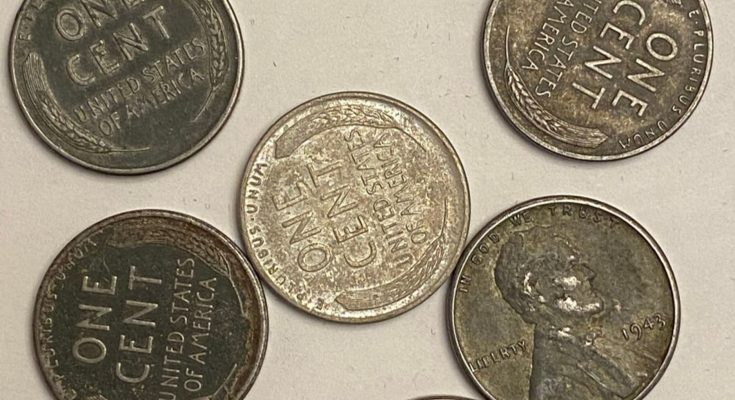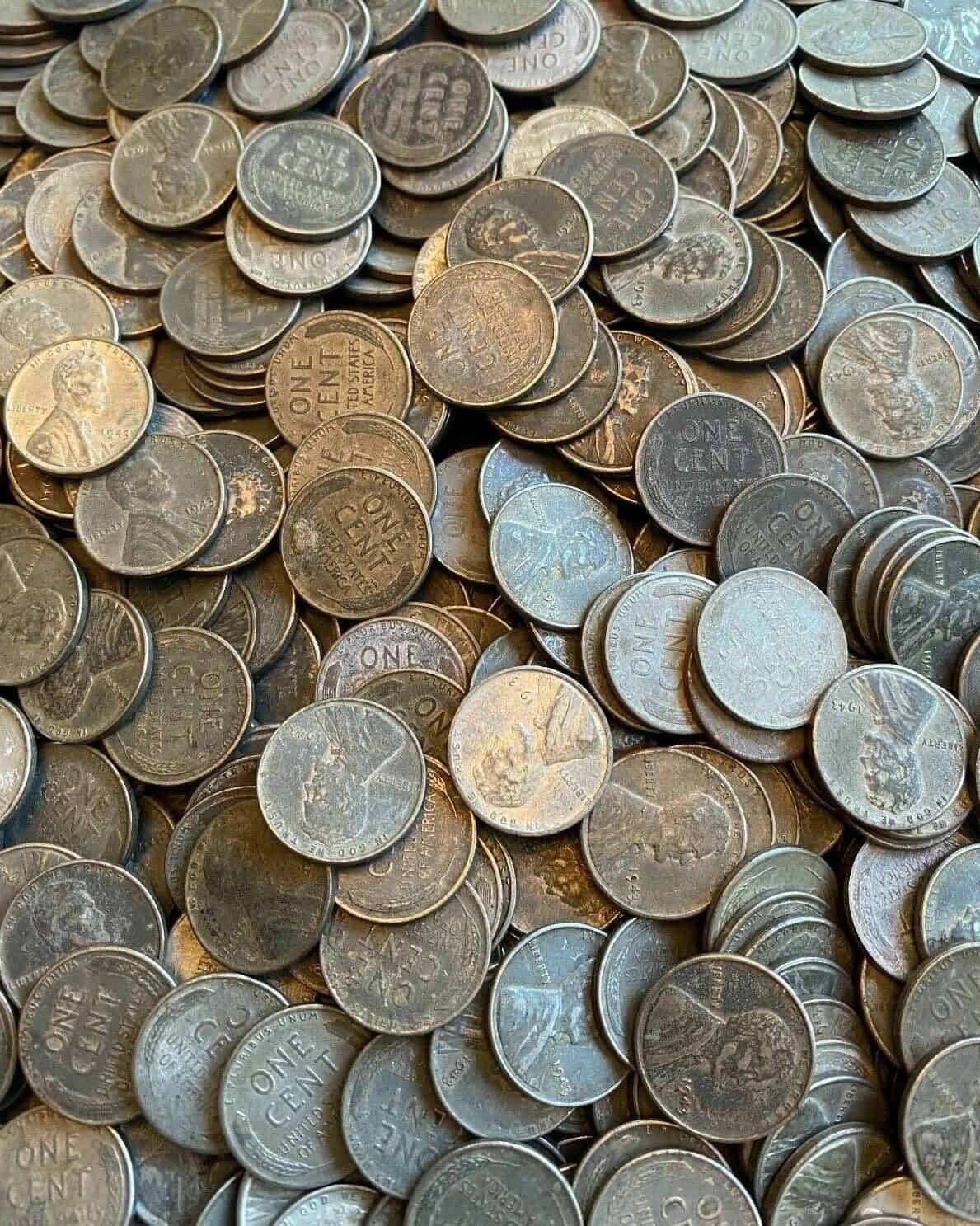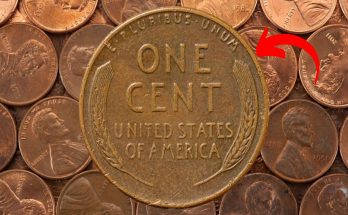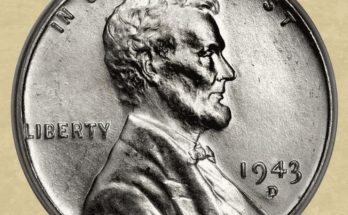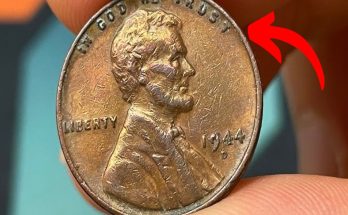One of the most unusual American pennies was the silver-colored coin minted in 1943. Since most people were used to pennies made of copper, this piece was a real surprise at that time. The reason for such a coin was simple. During World War II, the military needed copper for making casings, so the US Mint decided to use galvanized steel instead.
Even though this penny is different, it is not particularly rare. Nowadays, most of them are worth only a bit more than their face value. Nevertheless, checking the 1943 Penny value is advisable, particularly if you have a bronze piece or one with an error.
1943 Steel Penny History
In 1943, World War II was in full swing. The military industry was run out of copper necessary for making castings. Since the US Mint was making pennies of this metal, it decided to contribute.
Therefore, it replaced copper in pennies with zinc-coated steel. That change made this penny look like a silver coin, setting it apart from all the pennies ever minted before.
1943 Steel Lincoln penny |
|||
| Location | Year | Minted | Value |
| Philadelphia | 1943 | 684,628,670 | $0.30 to $8 |
| San Francisco | 1943 S | 191,550,000 | $0.40 to $20 |
| Denver | 1943 D | 217,660,000 | $0.35 to $10 |
| Total | / | 1,093,838,670 | / |
Unfortunately, this change in the material wasn’t an excellent idea. After a while, the coins quickly lost a zinc surface layer and were prone to rust. Another disadvantage was the similarity with Dimes.
People often mistakenly replaced these two coins for similarity and lost nine cents per piece when paying something. For all these reasons, the US Mint decided to reuse copper for producing pennies in 1944.
The 1943 Lincoln penny has the same look as other pennies in the series. A former US President Abraham Lincoln profile is on the obverse, with the inscription IN GOD WE TRUST located on the upper edge.
Above Lincoln’s shoulder is the word LIBERTY, while in front of the profile are the year of minting and the mint mark.
1943 Lincoln penny |
||
| Steel penny | Copper penny | |
| Face value | 1 cent ($0.01) | 1 cent ($0.01) |
| Compound | 99% steel with a thin zinc coating | 95% copper and 5% tin and zinc |
| Coin weight | 0.09524 (2.7 g) | 0.08818 (2.5 g) |
| Coin diameter | 0.750 inches (19.05 mm) | 0.750 inches (19.05 mm) |
| Coin thickness | 0.0610 inches (1.95 mm) | 0.0768 inches (1.95 mm) |
| Shape | Round | Round |
| Edge | Plain | Plain |
You can see two stalks of wheat along the reverse’ rims, with the face value of the ONE CENT in the middle. As always, there are also two inscriptions, the UNITED STATES OF AMERICA and E PLURIBUS UNUM.
1943 Steel Wheat Penny Types
In 1943, three mints produced this penny:
- The Philadelphia mint produced the 1943 penny that typically has no mint mark
- The San Francisco mint produced the 1943 penny with an S mint mark
- The Denver mint produced the 1943 penny with a D mint mark
These three mints struck over 1,000,000,000 Lincoln steel pennies in 1943. You can quickly distinguish them by the marks on the coin reverse.
1943 No Mint Mark Penny
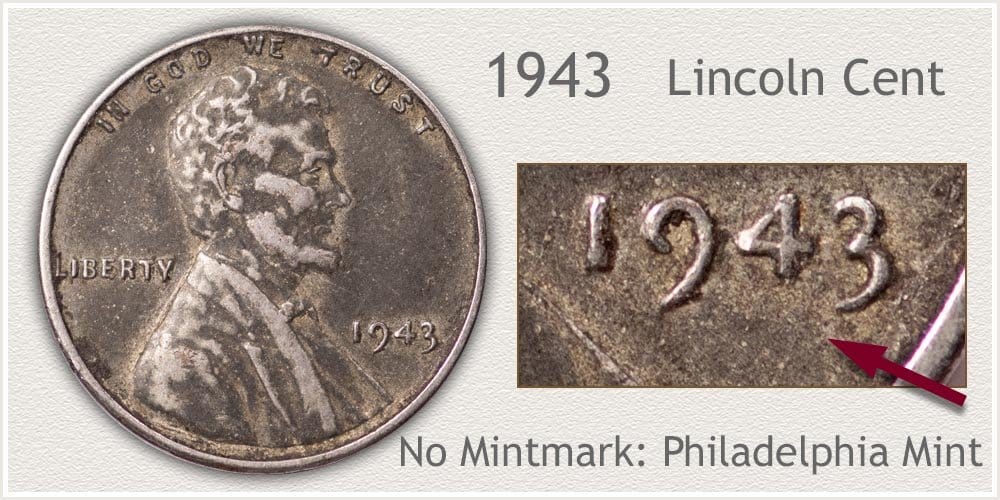
The Philadelphia mint produced 684,628,670 pennies in 1943. It is the 5th highest number of all the pennies made in this mint. As a result, the 1943 penny is very low on the rare coin scale.
1943 Steel Lincoln penny value* |
|||
| Quality | 1943 | 1943 S | 1943 D |
| Good | $0.16 | $0.27 | $0.22 |
| Very good | $0.22 | $0.32 | $0.32 |
| Fine | $0.32 | $0.43 | $0.38 |
| Very fine | $0.38 | $0.71 | $0.43 |
| Extra fine | $0.43 | $0.82 | $0.49 |
| About uncirculated | $0.55 | $1.11 | $0.82 |
| MS 60 | $2.74 | $6.4 | $3.22 |
| MS 65 | $8.91 | $22 | $11 |
*by USA Coin book
Since most of these coins were in circulation, today is difficult to find a specimen in excellent condition. Therefore, you can sell the 1943 MS 68 Steel Lincoln penny for an impressive $4,690.
1943 S penny Value
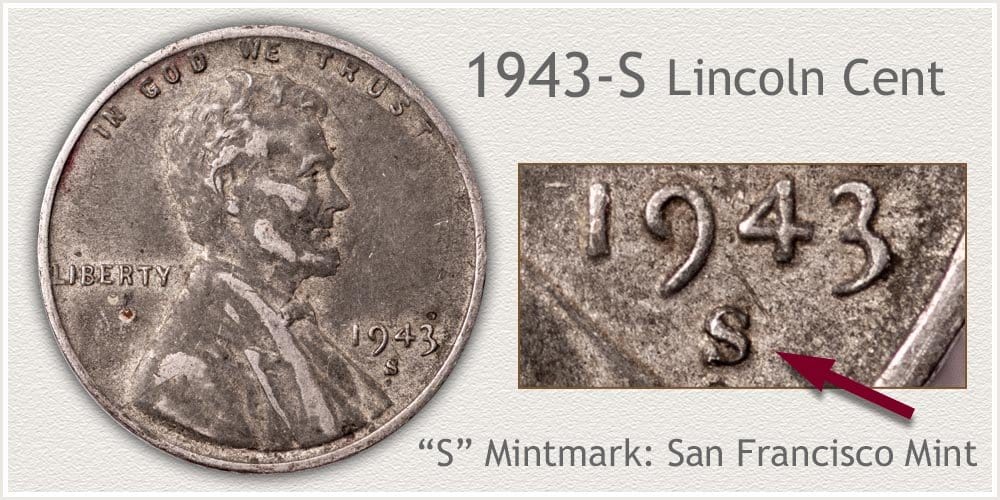
The S-marked penny comes from the San Francisco mint. In 1943, this mint produced 191,500,000 pennies, and it was the lowest production that particular year. If you have one in an MS 68 rating, you can sell it for $3,500.
1943 Steel Lincoln penny* |
|||
| Year | Quality | ||
| Fine | Extra fine | Uncirculated | |
| 1943 | $0.3 | $0.4 | $0.5 |
| 1943 S | $0.4 | $0.75 | $1 |
| 1943 D | $0.35 | $0.45 | $0.75 |
*by JM Bullion
1943 D Penny Value
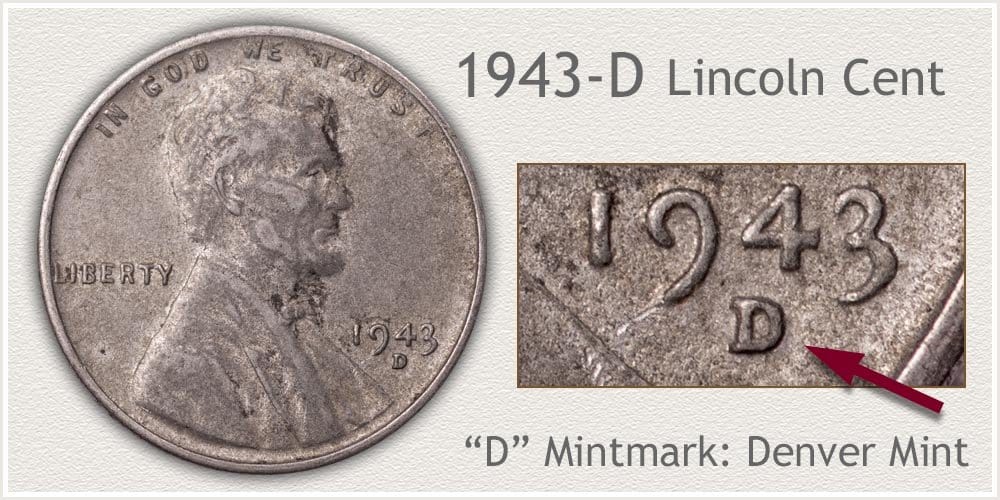
In 1943, 217,660,000 pennies came out from the Denver mint. Even though they are pretty common these days, most collectors want to include them in their collections. Most are entirely inexpensive, but you can find the high-graded piece for $3,250 in the coin market.
1943 Steel Lincoln penny value* |
||||
| Year | Quality | |||
| Good | Fine | Extra fine | Uncirculated | |
| 1943 | $0.1 | $0.15 | $0.3 | $1.25 |
| 1943 S | $0.15 | $0.23 | $0.63 | $3.2 |
| 1943 D | $0.1 | $0.18 | $0.4 | $2.26 |
*by CoinStudy
Specific 1943 Penny
1943 Copper Lincoln penny
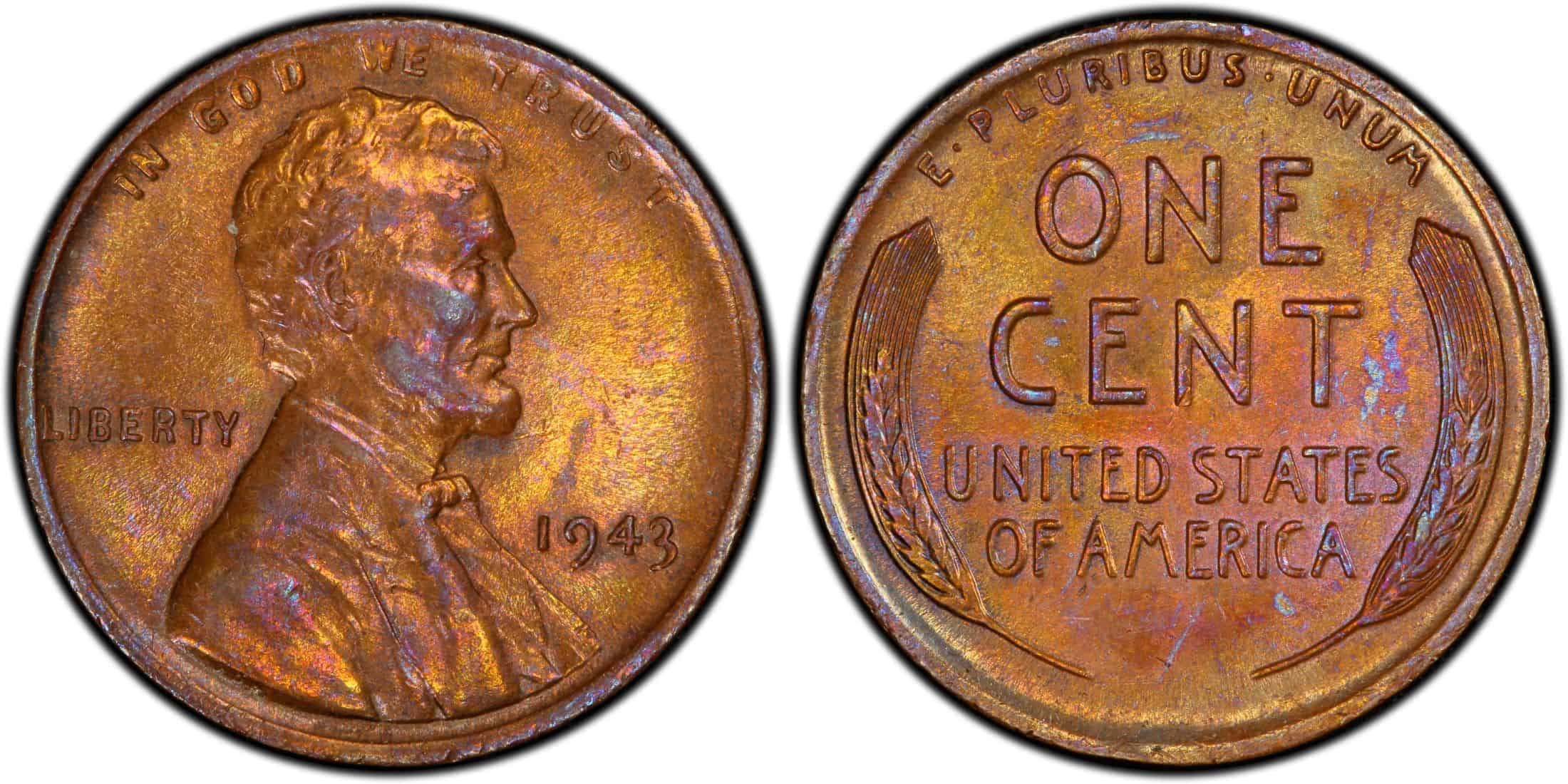
The 1943 copper penny was an accidental manufacturing error. Although the US Mint decided to replace copper with steel in the penny production, the machines mixed copper leftovers with steel plates.
1943 Copper Lincoln penny value* |
|||
| Quality | 1943 | 1943 S | 1943 D |
| Extra fine | $137,783 | $240,271 | $429,722 |
| About uncirculated | $214,194 | $418,038 | $723,645 |
| MS 60 | $389,968 | $565,610 | $846,689 |
| MS 65 | / | / | $2,196,797 |
*by USA Coin book
As a result, the first produced coins contained both metals and got reddish-yellow color. It is known that only about 40 copper pennies were minted in 1943, so they are considered exceptionally rare on the current coin market. As you can expect, they are precious and expensive.
1943 D/D Steel Lincoln penny
The 1943 D/D steel penny is an error coin minted that particular year. You can quickly notice the double-printed mintmark on the coin surface. A bold D is embossed on the reverse, and the other D is less visible and positioned closer to the coin’s left edge.
